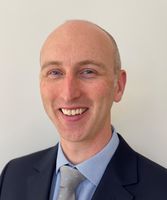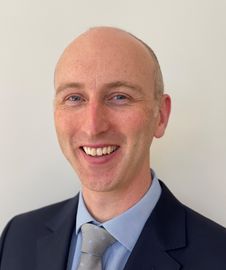Central Auckland, East Auckland, North Auckland, South Auckland, West Auckland > Private Hospitals & Specialists >
Andrew Irving - Orthopaedic Spine Surgeon
Private Service, Orthopaedics
Description
Andrew Irving is a New Zealand and internationally trained orthopaedic surgeon. He completed undergraduate training at the Otago University School of Medicine. He then completed the New Zealand orthopaedic training programme, becoming a fellow of the Royal Australasian College of Surgeons in 2018.
Andrew undertook two spine surgery fellowships under Mr Peter Robertson in Auckland City Hospital and Mr Peter McCombe in the Royal Brisbane Hospital (RBWH). He also has been trained in foot and ankle surgerywith Mr Matthew Tomlinson.
Andrew has a consultant appointment at Middlemore Hospital, focusing on spine surgery. Middlemore is the supra-regional referral centre for spinal cord injuries and along with Christchurch cover the spinal cord injuries for New Zealand. His private practice is based at Ascot Office Park with outreach clinics at Cavendish Specialist Centre, Marina Medical and Shorecare in North Shore.
Interests
- Spine surgery
- Cervical
- Thoracic
- Lumbar
- Hip Replacement
Consultants
-

Mr Andrew Irving
Orthopaedic Surgeon
Referral Expectations
You need to bring with you to your appointment:
Procedures / Treatments
For elderly patients joint replacement surgery is commonly required to treat damaged joints from wearing out, arthritis or other forms of joint disease including rheumatoid arthritis. In these procedures the damaged joint surface is removed and replaced with artificial surfaces normally made from metal (chromium cobalt alloy, titanium), plastic (high density polyethelene) or ceramic which act as alternate bearing surfaces for the damaged joint. These operations are major procedures which require the patient to be in hospital for several days and followed by a significant period of rehabilitation. The hospital has several ways of approaching the procedure for replacement and the specifics for the procedure will be covered at the time of assessment and booking of surgery. Occasionally blood transfusions are required; if you have some concerns raise this with your surgeon during consultation.
For elderly patients joint replacement surgery is commonly required to treat damaged joints from wearing out, arthritis or other forms of joint disease including rheumatoid arthritis. In these procedures the damaged joint surface is removed and replaced with artificial surfaces normally made from metal (chromium cobalt alloy, titanium), plastic (high density polyethelene) or ceramic which act as alternate bearing surfaces for the damaged joint. These operations are major procedures which require the patient to be in hospital for several days and followed by a significant period of rehabilitation. The hospital has several ways of approaching the procedure for replacement and the specifics for the procedure will be covered at the time of assessment and booking of surgery. Occasionally blood transfusions are required; if you have some concerns raise this with your surgeon during consultation.
The division of a crooked or bent bone to improve alignment of the limb. These procedures normally involve some form of internal fixation, such as rods or plates, or external fixation which involves external wires and pins to hold the bone. The type of procedure for fixation will be explained when the surgery is planned.
The division of a crooked or bent bone to improve alignment of the limb. These procedures normally involve some form of internal fixation, such as rods or plates, or external fixation which involves external wires and pins to hold the bone. The type of procedure for fixation will be explained when the surgery is planned.
Many orthopaedic procedures on joints are performed using an arthroscope, a fiber optic telescope that is used to look inside the joint. Through this type of keyhole surgery, fine instruments can be introduced through small incisions (portals) to allow surgery to be performed without the need for large cuts. This allows many procedures to be performed as a day stay and allows quicker return to normal function of the joint. Arthroscopic surgery is less painful than open surgery and decreases the risk of healing problems. Arthroscopy allows access to parts of the joints which can not be accessed by other types of surgery.
Many orthopaedic procedures on joints are performed using an arthroscope, a fiber optic telescope that is used to look inside the joint. Through this type of keyhole surgery, fine instruments can be introduced through small incisions (portals) to allow surgery to be performed without the need for large cuts. This allows many procedures to be performed as a day stay and allows quicker return to normal function of the joint. Arthroscopic surgery is less painful than open surgery and decreases the risk of healing problems. Arthroscopy allows access to parts of the joints which can not be accessed by other types of surgery.
In many cases tendons will be lengthened to improve the muscle balance around a joint or tendons will be transferred to give overall better joint function. This occurs in children with neuromuscular conditions but also applies to a number of other conditions. Most of these procedures involve some sort of splintage after the surgery followed by a period of rehabilitation, normally supervised by a physiotherapist.
In many cases tendons will be lengthened to improve the muscle balance around a joint or tendons will be transferred to give overall better joint function. This occurs in children with neuromuscular conditions but also applies to a number of other conditions. Most of these procedures involve some sort of splintage after the surgery followed by a period of rehabilitation, normally supervised by a physiotherapist.
Orthopaedic surgeons have expertise in the treatment of fractured (broken) bones, particularly in the assessment of damage that may have occurred around the fracture. Follow-up of a fracture may involve monitoring the progress of the healing bone, checking the position of the bone in a cast and deciding when other steps in management such as re-manipulation of the fracture or removal of a cast is required. Click here for more information about fractures.
Orthopaedic surgeons have expertise in the treatment of fractured (broken) bones, particularly in the assessment of damage that may have occurred around the fracture. Follow-up of a fracture may involve monitoring the progress of the healing bone, checking the position of the bone in a cast and deciding when other steps in management such as re-manipulation of the fracture or removal of a cast is required. Click here for more information about fractures.
Orthopaedic surgeons have expertise in the treatment of fractured (broken) bones, particularly in the assessment of damage that may have occurred around the fracture.
Follow-up of a fracture may involve monitoring the progress of the healing bone, checking the position of the bone in a cast and deciding when other steps in management such as re-manipulation of the fracture or removal of a cast is required.
Click here for more information about fractures.
Public Transport
The Auckland Transport website is a good resource to plan your public transport options.
Parking
PARKING AT ASCOT OFFICE PARK
Mr Irving is located on Level 2, Building C, 95 Ascot Office Park.
Limited parking is available underneath the building. Please park in the black and yellow ‘ORTHOPAEDICS’ car parks only.
Turn left from when you come in the driveway to take the ramp down to the basement parking. Orthopaedics car parks are situated in front of the first lift. Go through the car park and take the first right and turn right again (look for the big black and yellow signs).
IF THESE PARKS ARE FULL, YOU CAN PARK IN THE PAY CAR PARK ACROSS THE ROAD OR IN THE ELLERSLIE RACECOURSE CAR PARK
Pharmacy
Find your nearest pharmacy here

Contact Details
-
Phone
(09) 523 2766
-
Fax
(09) 522 0786
Healthlink EDI
orthogrp
Email
Urgent Appointments Available
Ara-Tai Road
Half Moon Bay
Auckland
Auckland 2012
Street Address
Ara-Tai Road
Half Moon Bay
Auckland
Auckland 2012
Postal Address
Ascot Office Park
Level 2, Building C
95 Ascot Avenue
Remuera
Auckland 1051
Ascot Office Park, 93-95 Ascot Avenue, Greenlane, Auckland
Central Auckland
-
Phone
(09) 523 2766
-
Fax
(09) 522 0786
Healthlink EDI
orthogrp
Email
Cavendish Clinic, 175 Cavendish Drive, Manukau, Auckland
South Auckland
-
Phone
(09) 523 2766
-
Fax
(09) 522 0786
Healthlink EDI
orthogrp
Email
Smales Farm Technology Office Park, 74 Taharoto Road, Takapuna, Auckland
North Auckland
-
Phone
(09) 523 2766
-
Fax
(09) 522 0786
Healthlink EDI
orthogrp
Email
Was this page helpful?
This page was last updated at 10:38AM on December 18, 2023. This information is reviewed and edited by Andrew Irving - Orthopaedic Spine Surgeon.
